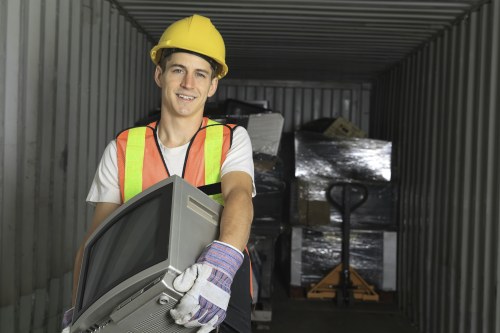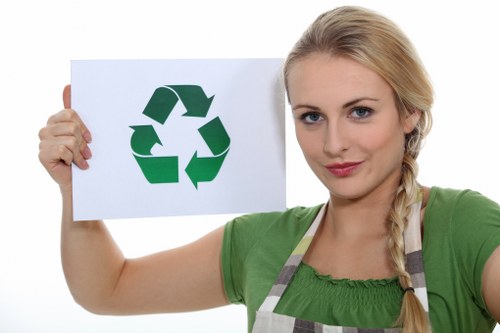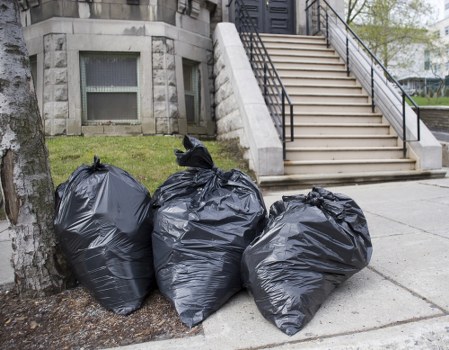Effective Construction Waste Disposal in Plumstead

Managing construction waste is a critical aspect of any building project. In Plumstead, proper disposal not only ensures compliance with local regulations but also promotes environmental sustainability.
Construction waste disposal involves the removal and recycling of debris generated during construction activities. This can range from concrete and wood remnants to metal scraps and packaging materials.
Failing to manage waste properly can lead to increased project costs, environmental harm, and legal repercussions. Therefore, understanding the best practices in Plumstead is essential for contractors and property owners alike.

Why Proper Waste Disposal Matters
Proper disposal of construction waste has several benefits:
- Environmental Protection: Reduces the strain on landfills and minimizes pollution.
- Cost Efficiency: Saves money by recycling materials and reducing disposal fees.
- Regulatory Compliance: Ensures adherence to local laws and avoids penalties.
- Enhanced Reputation: Demonstrates commitment to sustainability, attracting eco-conscious clients.
In Plumstead, these factors are increasingly important as the community values sustainable development and responsible business practices.
Implementing effective waste disposal strategies can make a significant difference in the overall success of construction projects.

Types of Construction Waste
Common Waste Materials
Construction sites generate a variety of waste materials, including:
- Concrete and masonry waste
- Wood and timber scraps
- Metals like steel and aluminum
- Plastics and packaging materials
- Drywall and insulation
Each type requires specific disposal methods to ensure they are handled responsibly.
Understanding the nature of these materials helps in planning effective waste management strategies.

Waste Disposal Options in Plumstead
Recycling Facilities
Recycling is a sustainable way to manage construction waste. Plumstead has several facilities that accept various materials:
- Concrete Crushers: Break down concrete for reuse in new projects.
- Metal Recyclers: Process metals for recycling and prevent them from entering landfills.
- Wood Recyclers: Convert wood scraps into mulch or engineered wood products.
Utilizing these facilities can significantly reduce the environmental impact of construction projects.
Additionally, recycling can provide cost savings by reducing the volume of waste that needs to be transported and disposed of.

Regulations and Compliance
Local Laws in Plumstead
Adhering to local regulations is crucial for construction waste disposal. Plumstead enforces specific guidelines to ensure sustainable practices:
- Permits: Certain types of waste require permits for transportation and disposal.
- Documentation: Keeping detailed records of waste management activities is mandatory.
- Segregation: Proper sorting of waste materials at the source helps in efficient disposal and recycling.
Non-compliance can result in hefty fines and project delays, making it imperative to stay informed about the latest regulations.
Working with local waste disposal services familiar with Plumstead's laws can aid in maintaining compliance.
Best Practices for Waste Disposal
Implementing best practices ensures effective waste management. Here are some strategies:
- Plan Ahead: Assess the types and amounts of waste expected before starting the project.
- Segregate Waste: Sort materials on-site to facilitate recycling and reduce disposal costs.
- Partner with Recyclers: Collaborate with local recycling facilities to ensure proper handling of waste.
- Educate Workers: Train your team on waste management protocols to minimize errors.
These practices not only contribute to environmental conservation but also enhance the efficiency of construction projects.
By adopting these methods, contractors in Plumstead can achieve sustainable operations and positive community relations.
Reducing Waste Generation
Prevention is better than cure. Minimizing waste generation at the source is a proactive approach:
- Use precise measurements to avoid excess materials.
- Opt for reusable forms and tools.
- Choose materials with lower environmental impact.
Such measures can lead to significant reductions in both waste and project costs.
Moreover, reducing waste aligns with global sustainability goals, enhancing the appeal of your projects.
Choosing the Right Disposal Service
Selecting a reliable waste disposal service is vital. Consider the following when choosing a provider in Plumstead:
- Experience and expertise in construction waste management.
- Compliance with local regulations and certifications.
- Availability of recycling options and sustainable practices.
- Competitive pricing and transparent billing.
A reputable disposal service can streamline your waste management process, ensuring efficiency and compliance.
Investing in the right partner can lead to long-term benefits for your business and the environment.
Service Offerings
Different services cater to various needs:
- On-Site Waste Collection: Regular pickups to manage waste efficiently.
- Recycling Programs: Comprehensive solutions for recycling construction materials.
- Consultation Services: Expert advice on optimizing waste disposal methods.
Assessing your project's specific requirements can help in selecting the most appropriate service offerings.
Tailored services ensure that your waste disposal aligns with your project goals and sustainability targets.
Environmental Impact
Construction waste has a significant impact on the environment. Proper disposal mitigates negative effects:
- Reduces landfill usage, preserving land for other purposes.
- Prevents pollution of soil and water resources.
- Conserves natural resources by promoting recycling.
- Decreases greenhouse gas emissions through efficient waste management.
In Plumstead, these efforts contribute to the community's overall environmental health and sustainability.
Employing responsible waste disposal practices aligns with broader environmental conservation initiatives.
Case Studies
Several projects in Plumstead have successfully implemented effective waste disposal strategies:
- The renovation of XYZ Building utilized comprehensive recycling, reducing waste by 40%.
- The ABC construction project partnered with local recyclers, achieving zero landfill disposal.
- The DEF development incorporated waste segregation on-site, enhancing recycling rates.
These examples demonstrate the feasibility and benefits of proper waste management in construction projects.
Learning from these case studies can inform and improve your own waste disposal practices.
Future Trends in Waste Disposal
The construction industry is evolving with new trends in waste management:
- Advanced Recycling Technologies: Innovations that improve the efficiency and range of materials that can be recycled.
- Waste-to-Energy Solutions: Converting waste materials into usable energy sources.
- Digital Waste Tracking: Utilizing software to monitor and manage waste generation and disposal.
- Sustainable Material Use: Increasing the use of materials that produce less waste and are easier to recycle.
Staying abreast of these trends can enhance your waste disposal strategies and keep your projects ahead of the curve.
Embracing innovation in waste management contributes to more sustainable and efficient construction practices.
Green Building Certifications
Achieving green building certifications often requires stringent waste management protocols:
- LEED Certification: Promotes sustainable site development and resource efficiency.
- BREEAM: Focuses on minimizing environmental impact through waste reduction.
- Green Star: Encourages the use of eco-friendly materials and waste management practices.
Integrating effective waste disposal into your construction projects can facilitate the attainment of these prestigious certifications.
Certifications not only validate your commitment to sustainability but also enhance the marketability of your projects.
Conclusion
Construction waste disposal in Plumstead is a vital component of sustainable building practices. By understanding the types of waste, adhering to local regulations, and implementing best practices, you can manage waste effectively.
Partnering with reliable disposal services and staying informed about future trends will ensure that your projects are both environmentally responsible and cost-efficient.
Contact us today to optimize your construction waste disposal and contribute to a greener Plumstead.